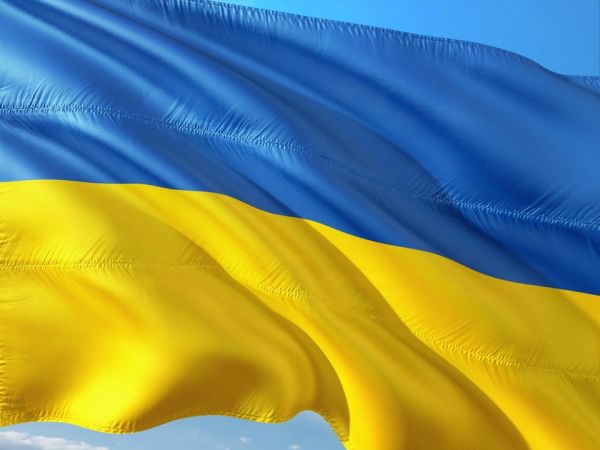These resources speak to sources and source collections that could be used for instruction with primary sources, in student research assignments, and more. We encourage you to take a look at these resources and join the conversation by suggesting additions.
Do you have other suggestions for works that could be included on this list? Let us know by tagging @CndHistAssoc on Twitter and using the hashtag #CHATeachingResourcesChat
ONLINE ARCHIVES AND INSTITUTES
Canadian Institute of Ukrainian Studies (CIUS) (University of Alberta): https://www.ualberta.ca/canadian-institute-of-ukrainian-studies/publications-and-e-resources/did-you-know-cius-answers.html
“To address the strong public interest in understanding the Russian Federation’s war against Ukraine, the Canadian Institute of Ukrainian Studies has launched a new rapid response series, “Did You Know? CIUS Answers: A Response to Your Questions about Russia’s War Against Ukraine.” This video series is designed to address your questions directly and concisely.”
The CIUS also hosts the “Internet Encyclopedia of Ukraine”: http://www.encyclopediaofukraine.com/default.asp
Kule Folklore Centre: https://www.ualberta.ca/kule-folklore-centre/index.html
Ukrainian Folklife Archive, Bohdan Medwidsky Ukrainian Folklore Archives (BMUFA): https://archives.ukrfolk.ca/
“The Bohdan Medwidsky Ukrainian Folklore Archives (BMUFA) at the Kule Folklore Centre is the largest North American repository of Ukrainian and Canadian-Ukrainian folklore materials. It is open to students, scholars, and the general public. The BMFUA is integral to the understanding of Ukrainian diaspora culture in general, and Ukrainian Canadian history and culture in particular. The mandate of the BMUFA is to document, preserve, and study Ukrainian vernacular culture in Ukraine, Canada, and around the world as it changes over time. The archives houses hundreds of collections. A large portion of the BMUFA holdings includes an extensive student fieldwork collection (whose thematic content includes: documents and studies of traditional songs, tales, sayings, beliefs, calendar customs, life cycle customs, material culture, folk arts, performance traditions, community life), as well as several ethnographic collections on topics ranging from local Ukrainian-Canadian community events to Folklore in Ukraine to Ukrainians in Brazil. Other records include family correspondence collections, music score collections, studies of Ukrainian ethnic culture such as Ukrainian dance, choral activity, drama, embroidery, foodlore, ceramics, among many others.”
Prairie Centre for the Study of Ukrainian Heritage (St. Thomas More College, University of Saskatchewan): https://pcuh.stmcollege.ca/ The PCUH hosts regular talks, publicizes expert interviews on current events, and includes oral history collections.
The Ukranian Canadian Research & Documentation Centre
http://www.ucrdc.org/index.html
Library and Archives Canada, Ukrainian Immigrants, 1891 – 1930: https://www.bac-lac.gc.ca/eng/discover/immigration/immigration-records/immigrants-ukraine-1891-1930/Pages/search.aspx
The database of records provides access to 14,793 names of Ukrainians who arrived in Canada between 1891 – 1930. “The first two Ukrainian settlers arrived in Canada in 1891 followed by tens of thousands until the start of the First World War. Most Ukrainian immigrants of this period were identified on government records as Poles, Russians, Austrians, Bukovinians, Galicians and Ruthenians, arriving from provinces in the Austro-Hungarian Empire. The vast majority of these immigrants settled in Manitoba, Saskatchewan, and Alberta. The second large wave of immigration from Ukraine occurred after the First World War. These immigrants were welcomed by the already established Ukrainian communities.”
Ukrainian Immigration to Alberta, Understanding Canadian Diversity in Alberta
http://wayback.archive-it.org/2217/20101208162026/http://www.edukits.ca/multiculturalism/student/immigration_ukrainian_e.html
NEWSPAPERS (selection, see recommendations from scholars below for more)
The Financial Times https://www.ft.com/content/77ab8dcf-cb02-4e57-aff0-85c8a84f5a1f
The Kyiv Independent https://kyivindependent.com/
The New Voice of Ukraine https://english.nv.ua/?utm_content=set_lang
Ukrainska Pravda https://www.pravda.com.ua/eng/
BLOGS
Many scholars have written blogs on this subject, providing valuable context and multiple perspectives on the conflict. Active History https://activehistory.ca/?s=ukraine&submit=Search is a great place to start!
James Trepanier, PhD “Renewing a Living Church” Canadian Museum of HIstory / Musee Canadiene de l’Histoire, December 14, 2017, https://www.historymuseum.ca/blog/renewing-a-living-church/
James Trepanier, Ph.D. “Renouveler Une Eglise Bien Vivante” Musee Canadien de l’Histoire / Canadian Museum of History. Le 14 decembre 2017, https://www.museedelhistoire.ca/blog/renouveller-une-eglise-bien-vivante/?_ga=2.229366748.1517043956.1649712328-2098215640.1637339631
Teachers’ Zone – Think Like a Historian: Working with Primary Source Evidence, Artifacts, St. Onuphrius Ukrainian Catholic Church. https://www.historymuseum.ca/teachers-zone/think-like-a-historian-working-with-primary-source-evidence/artifacts/st-onuphrius-ukrainian-catholic-church/
https://www.museedelhistoire.ca/zone-pedagogique/la-pensee-historique-lusage-de-sources-primaires/artefacts/leglise-catholique-ukrainienne-saint-onuphrius/
VIRTUAL EXHIBITS
Provincial Archives of Saskatchewan, “Ukrainian Orthodox Easter”: https://saskarchives.com/collections/exhibits/UkrainianOrthodoxEaster
Canadian Museum of History / Musee Canadien de l’Histoire, Treasures Gallery: Ukrainian eggs – https://www.historymuseum.ca/cmc/exhibitions/tresors/treasure/cat10e.html
Musee Canadien de l’Histoire/ Canadian Museum of History, Salle des Tresors: Oeufs de Paques ukrainiens – https://www.museedelhistoire.ca/cmc/exhibitions/tresors/treasure/cat10f.html
HISTORIANS IN THE NEWS AND OFFERING CONTEXT
David R. Marples, “Russia has reached the point of no return in its conflict with Ukraine,” The Conversation, January 27, 2022
https://theconversation.com/russia-has-reached-the-point-of-no-return-in-its-conflict-with-ukraine-175421
Helmut Smith, “Sources for the Ukraine Crisis: A letter to my students, February 24, 2022
https://storymaps.arcgis.com/stories/59997bed7e6d4cd68c38149f70ed9e77
Tanya Richardson, list of resources on Ukraine, March 3, 2022. Shared via Petro Jacyk Program for the Study of Ukraine, part of Munk School of Global Affairs and Public Policy at the University of Toronto
https://munkschool.utoronto.ca/jacyk/files/2022/03/Resources-to-Understand-Ukraine.pdf
Various upcoming events at The Centre for European, Russian, and Eurasian Studies (UofT) Find out more here: https://munkschool.utoronto.ca/ceres/events/
SUPPORTING THE WORK OF LIBRARIANS AND HISTORIANS
Ukraine-Archives Rescue Team – University of Alberta
U-ART: Ukraine – Archives Rescue Team was launched on March 11, 2022 as a Canadian emergency response initiative coordinated at the University of Alberta by the Canadian Institute of Ukrainian Studies, Kule Folklore Centre, and Kule Institute for Advanced Studies. The goal of the initiative is to provide data backups for Ukrainian archival institutions, research institutions, individual scholars in all disciplines. https://www.ualberta.ca/kule-folklore-centre/news/2022/march/u-art.html


